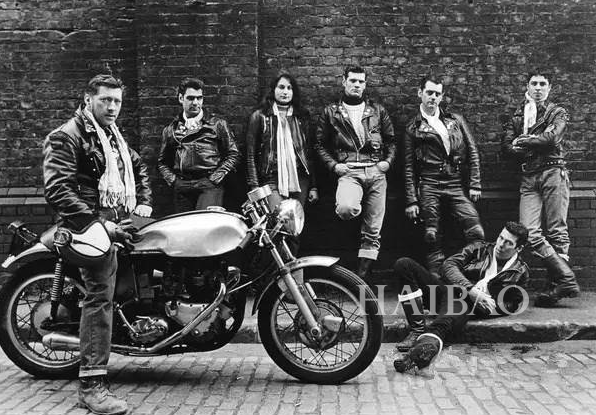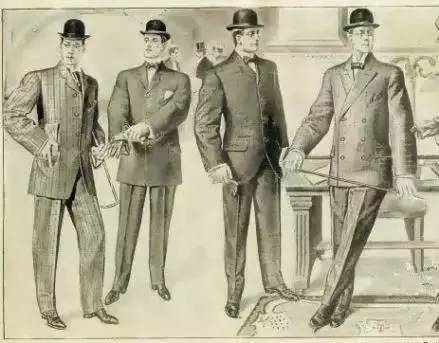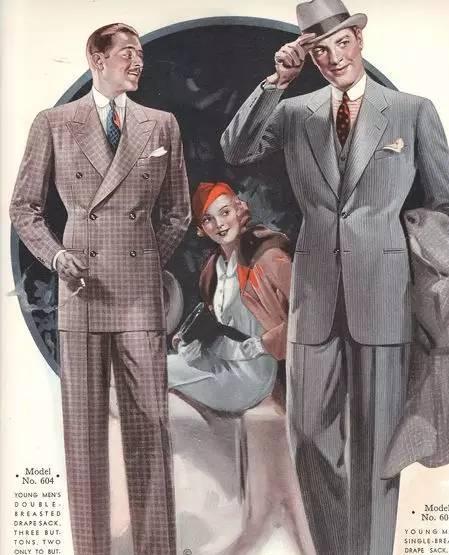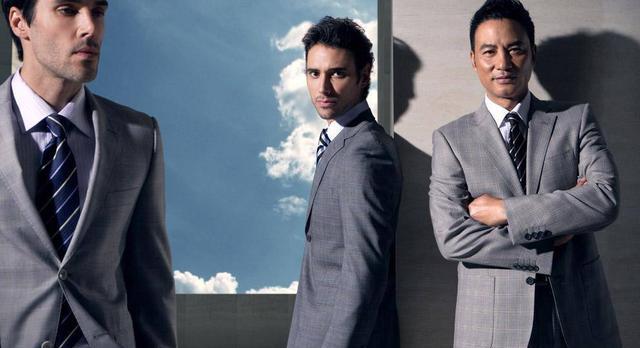Suit, originated in Europe in the 17th century, has become the daily clothes of men in various occasions all over the world. The reason why the suit is so prosperous is not only that the dressing effect can reflect the simplicity, straightness, straightness, exquisite craftsmanship and fitness, but also the age span of the wearer is large, which is suitable for the three generations of the elderly, middle-aged and young people. There is also a very important reason is that it has a profound cultural connotation, and if you want to understand the suit culture, you can not but review the history of suit.
The ancestor of suit: zusterkol, 1690
In the Louis XIV era in the second half of the 17th century, the knee length coat "Chester Cole" and the shorter "best" as well as the tight fitting half pants "keurot" appeared on the historical stage together, forming the composition form of modern three piece suit and many wearing habits. It's not impolite to button a single breasted suit, and only one button on the top of two buttons.

The originator of ties: crabbert, 1705
From 1670 to 1675, the Croatian light cavalry served in Paris as guards of Louis XIV. They were called "krabart guards". They tied a piece of linen around their necks to arouse people's imitation, and became an indispensable decoration for men's neckline. This is the ancestor of modern collar belt, "krabart". At that time, how to tie the belt was one of the criteria to evaluate whether the noble man was elegant or not. Therefore, many nobles specially employed attendants to do this work.
Trousers are a product of the French Revolution: pontalon, 1829
In 1789, the revolutionaries in the French Revolution used pantaloons as the tight half pants of the aristocrats. At first, pontalon's trousers were only in the calf's belly, and then gradually grew longer, reaching the foot in 1793. By the first half of the 19th century, the legs were sometimes tight and sometimes loose, coexisting with the traditional half pants. By the 1850s, men's trousers were modern.

Modern suits born in the Lounge: laonki jacket, 1853
In the Victorian British upper class, in many manners, especially in the social activities at night, men must wear tuxedos, behave gracefully and speak well. After dinner, men can gather in the lounge next to the dining room for a rest. Only here can they smoke, drink brandy, joke, or lie down on the sofa. At this time, the tight and tight tuxedo seems out of date. As a result, a loose tailless jacket appeared on the stage of history as a special dress for the rest room. It was called "laongji jacket", which was produced around 1848. For quite some time, this kind of jacket can not be put on the elegant hall. It is only used for rest, outing and walking. In the latter half of the 19th century, this kind of jacket rose to be an important variety in men's wear. At that time, Oxford jacket and Cambridge jacket worn by students of Oxford University and Cambridge University also had this shape.

The birth of modern suit: the beginning of the 20th century
In the 20th century, men's dress began to get rid of the gorgeous dress coat of Victorian period and became more casual. The restrictions on clothing in the upper class society were gradually broken. Pragmatism became the creed of fashion culture. The long, slim and body-building silhouette coat became popular, which opened the curtain of modern western suit history and laid the foundation for the birth of modern suit.
In the 1930s, men's clothing was still straight and masculine. Men's wear was mainly in suits and gowns, showing the characteristics of heaviness and straightness.

In the 1940s, men's suits were characterized by wide waist and small hem, slightly flat and wide shoulders, full chest, large collar turned over, and small cuffs and trouser legs, which obviously exaggerated the straight line beauty and masculinity of men.

In the 1990s, the sleeves of suits and shirts were shorter than those of suits. They were mainly straight tube type, and the length of the shirt was over the buttocks.

Today's suit sleeves are shorter, which will show a little shirt sleeves, and the clothes are more slim and fit the body shape. The length has also been shortened.
The reason why suits are so prosperous is that they have profound cultural connotations. The mainstream suit culture is often labeled as "cultured, educated, gentlemanly and authoritative".
Suits have always been the pets of men's clothing Kingdom, and "suits and leathers" are used to describe gentle gentry and handsome men. The main characteristics of the suit are neat appearance, smooth lines and comfortable wearing. If you wear a tie or bow tie, it will be more elegant and simple. In addition, in the increasingly open modern society, suits, as a style of clothing, have also entered the ranks of women's clothing, reflecting the independence and self-confidence of women and men. Some people also call suits as women's ever-changing coats.

What are the different ages and different styles of suits?
Shenzhen Fodisy Investment development Co., LTD,Professional engaged inhigh-end uniform customization, hotel uniform customization,club uniform customization, welcome to contact consultation!










